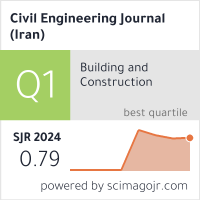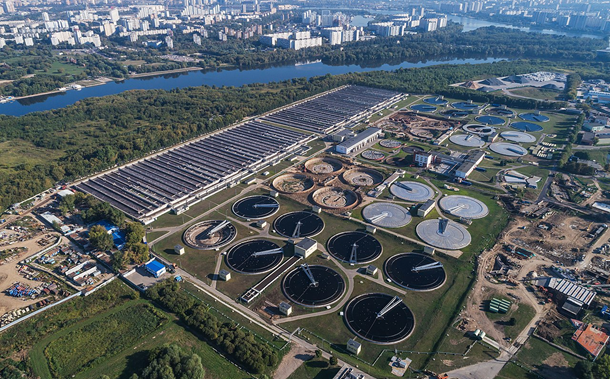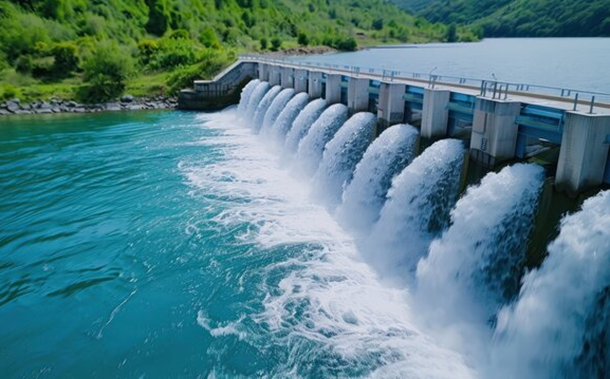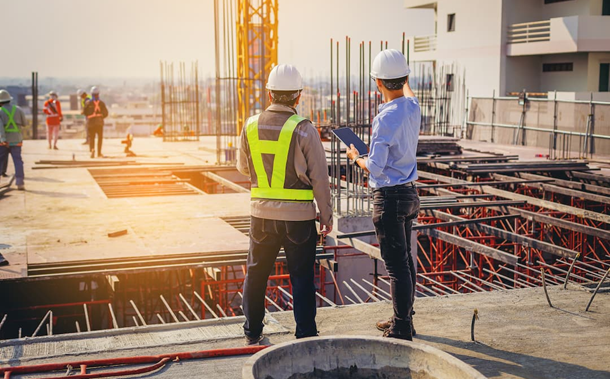Seismic Performance of Reinforced Concrete Structures with Concrete Deficiency Caused by In-situ Quality Management Issues
Downloads
Doi:10.28991/CEJ-2023-09-08-010
Full Text:PDF
Downloads
[2] Mahmoud, S., Genidy, M., & Tahoon, H. (2017). Time-History Analysis of Reinforced Concrete Frame Buildings with Soft Storeys. Arabian Journal for Science and Engineering, 42(3), 1201–1217. doi:10.1007/s13369-016-2366-1.
[3] Moustafa, A., Gheni, A., & ElGawady, M. A. (2017). Shaking-Table Testing of High Energy–Dissipating Rubberized Concrete Columns. Journal of Bridge Engineering, 22(8), 4017042. doi:10.1061/(asce)be.1943-5592.0001077.
[4] Habib, A., Yildirim, U., & Eren, O. (2021). Seismic Behavior and Damping Efficiency of Reinforced Rubberized Concrete Jacketing. Arabian Journal for Science and Engineering, 46(5), 4825–4839. doi:10.1007/s13369-020-05191-1.
[5] Tsai, K. C., Hsiao, C. P., & Bruneau, M. (2000). Overview of building damages in 921 Chi-Chi earthquake. Earthquake Engineering and Engineering Seismology, 2(1), 93–108.
[6] Elnashai, A. S., Gencturk, B., Kwon, O. S., Hashash, Y. M. A., Kim, S. J., Jeong, S. H., & Dukes, J. (2012). The Maule (Chile) earthquake of February 27, 2010: Development of hazard, site specific ground motions and back-analysis of structures. Soil Dynamics and Earthquake Engineering, 42, 229–245. doi:10.1016/j.soildyn.2012.06.010.
[7] Padgett, J. E., & DesRoches, R. (2007). Sensitivity of seismic response and fragility to parameter uncertainty. Journal of Structural Engineering, 133(12), 1710-1718. doi:10.1061/(ASCE)0733-9445(2007)133:12(1710).
[8] Lee, T. H., & Mosalam, K. M. (2005). Seismic demand sensitivity of reinforced concrete shear-wall building using FOSM method. Earthquake Engineering and Structural Dynamics, 34(14), 1719–1736. doi:10.1002/eqe.506.
[9] Rajeev, P., & Tesfamariam, S. (2011). Effect of construction quality variability on seismic fragility of reinforced concrete building. Proceedings of the ninth pacific conference on earthquake engineering structure building and Earthquake-Resilient Society, 14-16 April, 2011, Auckland, New Zealand.
[10] Kim, S., Moon, T., & Kim, S. J. (2020). Effect of uncertainties in material and structural detailing on the seismic vulnerability of RC frames considering construction quality defects. Applied Sciences (Switzerland), 10(24), 8832. doi:10.3390/app10248832.
[11] Mahdavi, G., Nasrollahzadeh, K., & Hariri-Ardebili, M. A. (2019). Optimal FRP jacket placement in RC frame structures towards a resilient seismic design. Sustainability (Switzerland), 11(24), 6985. doi:10.3390/su11246985.
[12] Zhao, J., Qiu, H., Sun, J., & Jiang, H. (2021). Seismic performance evaluation of different strategies for retrofitting RC frame buildings. Structures, 34, 2355–2366. doi:10.1016/j.istruc.2021.09.016.
[13] He, W.-L., & Agrawal, A. K. (2008). Analytical Model of Ground Motion Pulses for the Design and Assessment of Seismic Protective Systems. Journal of Structural Engineering, 134(7), 1177–1188. doi:10.1061/(asce)0733-9445(2008)134:7(1177).
[14] Moustafa, A., & Takewaki, I. (2010). Deterministic and probabilistic representation of near-field pulse-like ground motion. Soil Dynamics and Earthquake Engineering, 30(5), 412–422. doi:10.1016/j.soildyn.2009.12.013.
[15] Baker, J. W. (2007). Quantitative classification of near-fault ground motions using wavelet analysis. Bulletin of the Seismological Society of America, 97(5), 1486–1501. doi:10.1785/0120060255.
[16] Habib, A., AL Houri, A., & Yildirim, U. (2021). Comparative study of base-isolated irregular RC structures subjected to pulse-like ground motions with low and high PGA/PGV ratios. Structures, 31, 1053–1071. doi:10.1016/j.istruc.2021.02.021.
[17] Kohrangi, M., Vamvatsikos, D., & Bazzurro, P. (2019). Pulse-like versus non-pulse-like ground motion records: Spectral shape comparisons and record selection strategies. Earthquake Engineering and Structural Dynamics, 48(1), 46–64. doi:10.1002/eqe.3122.
[18] Yaghmaei-Sabegh, S. (2012). Improvement of Iranian Seismic Design Code Considering the Near-Fault Effects. International Journal of Engineering, 25(2 (C)), 147–158. doi:10.5829/idosi.ije.2012.25.02c.08.
[19] Zhu, T. J., Heidebrecht, A. C., & Tso, W. K. (1988). Effect of peak ground acceleration to velocity ratio on ductility demand of inelastic systems. Earthquake Engineering & Structural Dynamics, 16(1), 63–79. doi:10.1002/eqe.4290160106.
[20] Zhu, T. J., Tso, W. K., & Heidebrecht, A. C. (1988). Effect of Peak Ground a/v Ratio on Structural Damage. Journal of Structural Engineering, 114(5), 1019–1037. doi:10.1061/(asce)0733-9445(1988)114:5(1019).
[21] Alothman, A., Mangalathu, S., Al-Mosawe, A., Alam, M. M., & Allawi, A. (2023). The influence of earthquake characteristics on the seismic performance of reinforced concrete buildings in Australia with varying heights. Journal of Building Engineering, 67, 105957. doi:10.1016/j.jobe.2023.105957.
[22] Opabola, E. A., & Elwood, K. J. (2023). Seismic Performance of Reinforced Concrete Beams Susceptible to Single-Crack Plastic Hinge Behavior. Journal of Structural Engineering, 149(4), 4023020. doi:10.1061/jsendh.steng-11424.
[23] Ou, Y. C., Joju, J., & Hsieh, M. Y. (2023). Seismic behavior of reinforced concrete beam-column joints with unstressed steel strands fully or partially used for beam longitudinal reinforcement. Journal of Building Engineering, 67, 105932. doi:10.1016/j.jobe.2023.105932.
[24] Ahiwale, D. D., Kontoni, D. P. N., & Darekar, P. L. (2023). Seismic performance assessment of reinforced concrete frames with different bracing systems. Innovative Infrastructure Solutions, 8(3), 102. doi:10.1007/s41062-023-01071-3.
[25] Cook, D., Sen, A., Liel, A., Basnet, T., Creagh, A., Koodiani, H. K., Berkowitz, R., Ghannoum, W., Hortacsu, A., Kim, I., Lehman, D., Lowes, L., Matamoros, A., Naeim, F., Sattar, S., & Smith, R. (2023). ASCE/SEI 41 assessment of reinforced concrete buildings: Benchmarking nonlinear dynamic procedures with empirical damage observations. Earthquake Spectra, 39(3). doi:10.1177/87552930231173453.
[26] Shegay, A. V., Miura, K., Fujita, K., Tabata, Y., Maeda, M., & Seki, M. (2023). Evaluation of seismic residual capacity ratio for reinforced concrete structures. Resilient Cities and Structures, 2(1), 28–45. doi:10.1016/j.rcns.2023.02.004.
[27] Dogan, G., Hakan Arslan, M., & Ilki, A. (2023). Detection of damages caused by earthquake and reinforcement corrosion in RC buildings with Deep Transfer Learning. Engineering Structures, 279, 115629. doi:10.1016/j.engstruct.2023.115629.
[28] Askouni, P. K. (2023). The Effect of Sequential Excitations on Asymmetrical Reinforced Concrete Low-Rise Framed Structures. Symmetry, 15(5), 968. doi:10.3390/sym15050968.
[29] Ferraioli, M., Concilio, A., & Molitierno, C. (2022). Seismic performance of a reinforced concrete building retrofitted with self-centering shape memory alloy braces. Procedia Structural Integrity, 44, 974–981. doi:10.1016/j.prostr.2023.01.126.
[30] Deng, Y., Yan, C., & Niu, P. (2023). Hysteretic model of reinforced concrete bridge piers based on earthquake damage and corrosion from saline soil. Soil Dynamics and Earthquake Engineering, 166, 107732. doi:10.1016/j.soildyn.2022.107732.
[31] Murray, P. B., Feliciano, D., Goldwyn, B. H., Liel, A. B., Arroyo, O., & Javernick-Will, A. (2023). Seismic safety of informally constructed reinforced concrete houses in Puerto Rico. Earthquake Spectra, 39(1), 5–33. doi:10.1177/87552930221123085.
[32] Elnashai, A. S., & Di Sarno, L. (2015). Fundamentals of earthquake engineering: from source to fragility. John Wiley & Sons, Hoboken, United States.
[33] Raj, A., Sathyan, D., & Mini, K. M. (2019). Physical and functional characteristics of foam concrete: A review. Construction and Building Materials, 221, 787–799. doi:10.1016/j.conbuildmat.2019.06.052.
[34] Kasemchaisiri, R., & Tangtermsirikul, S. (2007). A method to determine water retainability of porous fine aggregate for design and quality control of fresh concrete. Construction and Building Materials, 21(6), 1322–1334. doi:10.1016/j.conbuildmat.2006.01.009.
[35] Caspeele, R., Sykora, M., & Taerwe, L. (2014). Influence of quality control of concrete on structural reliability: Assessment using a Bayesian approach. Materials and Structures/Materiaux et Constructions, 47(1–2), 105–116. doi:10.1617/s11527-013-0048-y.
[36] ACI 318-19. (2019). Building Code Requirements for Structural Concrete and Commentary. American Concrete Institute (ACI), Michigan, United States.
[37] ASCE/SEI 7-22. (2021). Minimum Design Loads and Associated Criteria for Buildings and Other Structures. American Society of Civil Engineers (ASCE), Reston, United States. doi:10.1061/9780784415788.
[38] NIST GCR 17-917-46v3. (2017). Guidelines for Nonlinear Structural Analysis for Design of Buildings Part IIb – Reinforced Concrete Moment Frames. National Institute of Standards and Technology (NIST), Gaithersburg, United States. doi:10.6028/NIST.GCR.17-917-46v3.
[39] Mander, J. B., Priestley, M. J. N., & Park, R. (1988). Theoretical Stress"Strain Model for Confined Concrete. Journal of Structural Engineering, 114(8), 1804–1826. doi:10.1061/(asce)0733-9445(1988)114:8(1804).
[40] Park, R., & Paulay, T. (1975). Reinforced Concrete Structures. John Wiley & Sons. Hoboken, United States. doi:10.1002/9780470172834.
[41] Kalantari, A., & Roohbakhsh, H. (2020). Expected seismic fragility of code-conforming RC moment resisting frames under twin seismic events. Journal of Building Engineering, 28, 101098. doi:10.1016/j.jobe.2019.101098.
[42] Hu, G., Wang, Y., Huang, W., Li, B., & Luo, B. (2020). Seismic mitigation performance of structures with viscous dampers under near-fault pulse-type earthquakes. Engineering Structures, 203, 109878. doi:10.1016/j.engstruct.2019.109878.
- Authors retain all copyrights. It is noticeable that authors will not be forced to sign any copyright transfer agreements.
- This work (including HTML and PDF Files) is licensed under a Creative Commons Attribution 4.0 International License.![]()















